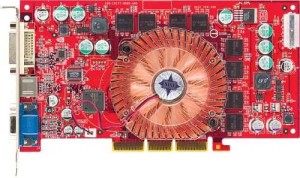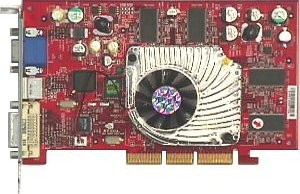The quest for the lost fragment is over, at last!
Today I have returned from Athens and installed in Electron the additional ram module and the long awaited shader capable MSI FX5900XT-VTD128 card!
The first thing I’ve done was to update the Nvidia driver packages from ‘nvidia-96xx’ to ‘nvidia’, this currently means going from 96.31 to 97.55.
This is what’s new from GeForce4 Ti 4200 (NV25) to GeForce FX5900 XT (NV35):
- The OpenGL version string is now 2.1.0
- The CineFX 2.0 engine allows for two new anti-aliasing modes: 4x Bilinear Multisampling by 4x Supersampling and 4x Bilinear Multisampling by 2x Supersampling
- There are eighteen new extensions available: GL_ARB_fragment_program, GL_ARB_fragment_program_shadow, GL_ARB_fragment_shader, GL_ARB_half_float_pixel, GL_EXT_blend_func_separate, GL_EXT_framebuffer_blit, GL_EXT_framebuffer_multisample, GL_EXT_framebuffer_object, GL_EXT_stencil_two_side, GL_EXT_texture_sRGB, GL_NV_float_buffer, GL_NV_fragment_program, GL_NV_fragment_program_option, GL_NV_framebuffer_multisample_coverage, GL_NV_half_float, GL_NV_primitive_restart, GL_NV_vertex_program2, GL_NV_vertex_program2_option
What follows is a series of test, actually they are exactly the same, and with the same settings, as the ones shown in the Easter gifts post:
| Test | NoAA, NoAF | 2xAA, 4xAF |
|---|---|---|
| glxgears | 4852.8 | 2678.0 |
| Blender | 9978 | 7927 |
| GL_shadow | 1189.4 | 793.0 |
| GL_pointz | 544.8 | 552.0 |
| GL_blit | 2006.0 | 1391.4 |
| GL_smoke | 449.4 | 402.8 |
Some tests perform better on Electron than on Thunder (which has a much faster graphic card and DDR RAM), this is very strange, maybe I’ve got to run these tests on Thunder again. 😉


